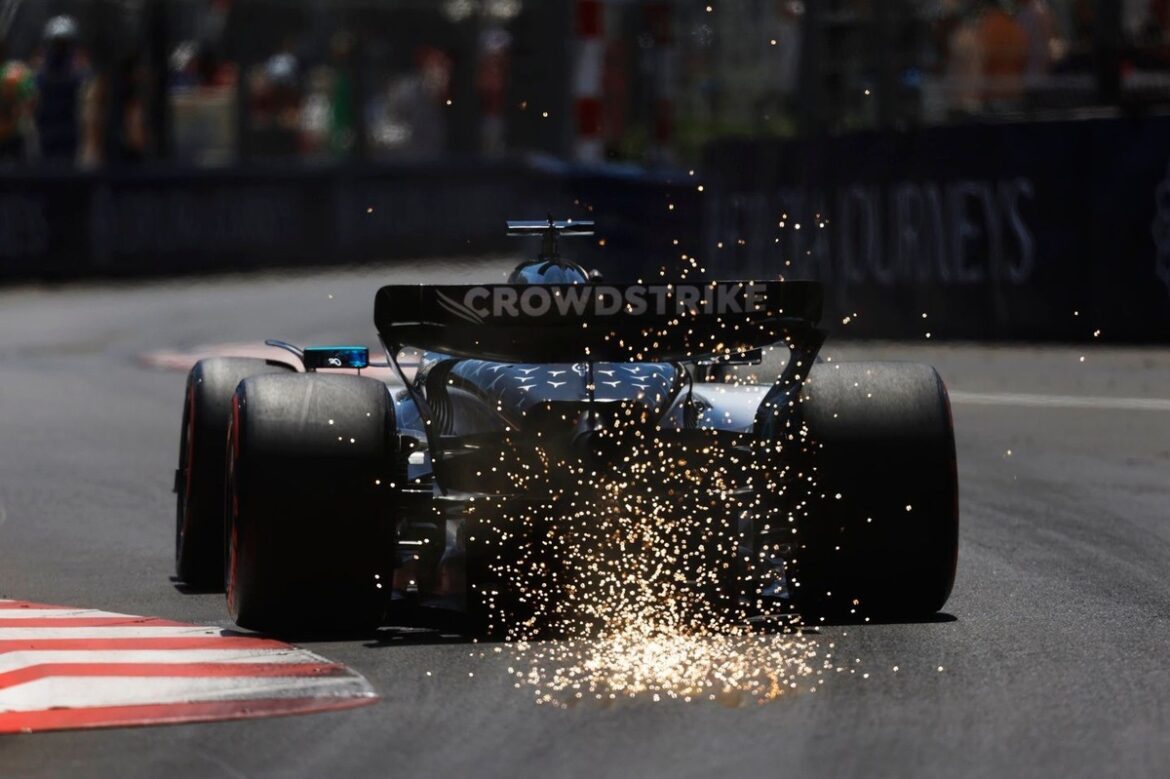George Russell, the Mercedes driver, recently expressed his thoughts on the need for a significant change to the Monaco Grand Prix format. This comes in the wake of a disappointing Formula 1 rules experiment that did not yield the anticipated excitement or competitive racing. The Monaco Grand Prix, renowned for its challenging circuit and glamorous backdrop, has often been criticized for its lack of overtaking opportunities, leading to races that can feel predictable and uneventful.
In a bid to add more strategic depth and unpredictability to the race, F1 and the FIA implemented a new rule that required drivers to use three different sets of tires during the 78-lap race. This adjustment aimed to encourage more pit stops, thereby increasing the chances of on-track battles and excitement. However, despite these intentions, the outcome was less than thrilling, as the top four qualifiers maintained their positions throughout the race. Meanwhile, some drivers were seen intentionally lagging behind to create advantageous gaps for their teammates, which frustrated Russell as he battled to regain points after facing technical difficulties in qualifying.
The situation escalated for Russell when he found himself stuck behind Alex Albon, who was driving at a significantly slower pace. In an attempt to overtake, Russell made the controversial decision to cut the chicane, incurring a penalty that ultimately compounded his challenges during the race. Instead of the usual 10-second penalty, the stewards opted for a drive-through penalty, further complicating his efforts to score points.
Reflecting on the race, Russell acknowledged the effort to innovate but emphasized that a more drastic overhaul might be necessary to rejuvenate the event, especially considering that the Monaco Grand Prix is approaching its 100th anniversary. He expressed his frustration at the lack of action on the track and posed a thought-provoking idea: perhaps the race weekend should be restructured to focus more on qualifying rather than the race itself.
Russell suggested a model where the excitement of qualifying could be harnessed more effectively. He proposed that the weekend could feature two qualifying sessions—one on Saturday, and another on Sunday—where drivers could vie for points and trophies based on their qualifying performances. This concept highlights the thrill that many fans and drivers experience during qualifying, which often surpasses the excitement of the actual race at Monaco.
He articulated that the current format may not be serving the interests of the spectators, many of whom might be more interested in the social aspects of the event than the racing itself. With the picturesque setting of Monaco, it’s not uncommon for attendees to enjoy the festivities from luxury yachts, seemingly indifferent to the race’s outcome.
Russell further elaborated on the challenges of racing in Monaco, describing it as relatively easy to fall off the pace. He noted that even a Formula 2 car could potentially hinder the progress of an F1 car on this narrow and winding circuit. This acknowledgment underscores the unique difficulties and limitations that the Monaco track presents, as overtaking opportunities are scant, and strategic positioning becomes critical.
In his candid remarks, Russell shared his perspective on the latter part of the race, where he found a renewed sense of enjoyment despite the circumstances. After deciding to take matters into his own hands by pushing the limits of his car, he was able to experience the thrill of driving at full speed on one of the most iconic circuits in the world. He described the last 25 laps of the race as the most exhilarating moments of the entire weekend, emphasizing his desire to enjoy the experience rather than merely focus on the points.
Russell’s insights highlight a growing conversation within the F1 community about the need for innovation and adaptation in the sport, especially at historically significant venues like Monaco. As the series evolves and new generations of fans engage with the sport, it may be essential to reevaluate traditional race formats to ensure they remain competitive and entertaining.
Looking ahead, the discussions around the Monaco Grand Prix format change could set the stage for future adjustments in the sport. Engaging fans and drivers alike in this dialogue will be crucial for maintaining the allure of Formula 1 and ensuring that races continue to deliver the high-octane excitement that both participants and spectators crave. The balance between tradition and innovation will be key as the sport navigates its path forward, particularly as it gears up for significant milestones like the 100th anniversary of the Monaco Grand Prix.
In conclusion, George Russell’s reflections on the need for change at the Monaco Grand Prix resonate with many in the Formula 1 community. His suggestions for a more engaging format that emphasizes qualifying could pave the way for future innovations in F1 racing, ensuring that the sport remains dynamic and captivating for years to come. As the dialogue continues, the focus will likely shift toward creating a more entertaining experience that honors the history of the sport while embracing the excitement of competitive racing.
